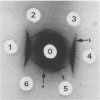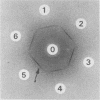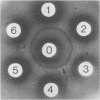Abstract
By using hot acid extract and double-diffusion studies, an antigen isolated from clinical strains of Moraxella catarrhalis, designated the C antigen, was studied. The antigen is labile, relatively trypsin insensitive, and either polysaccharide or glycoconjugate in nature. At least two serologically distinct C antigens have been identified.
Full text
PDF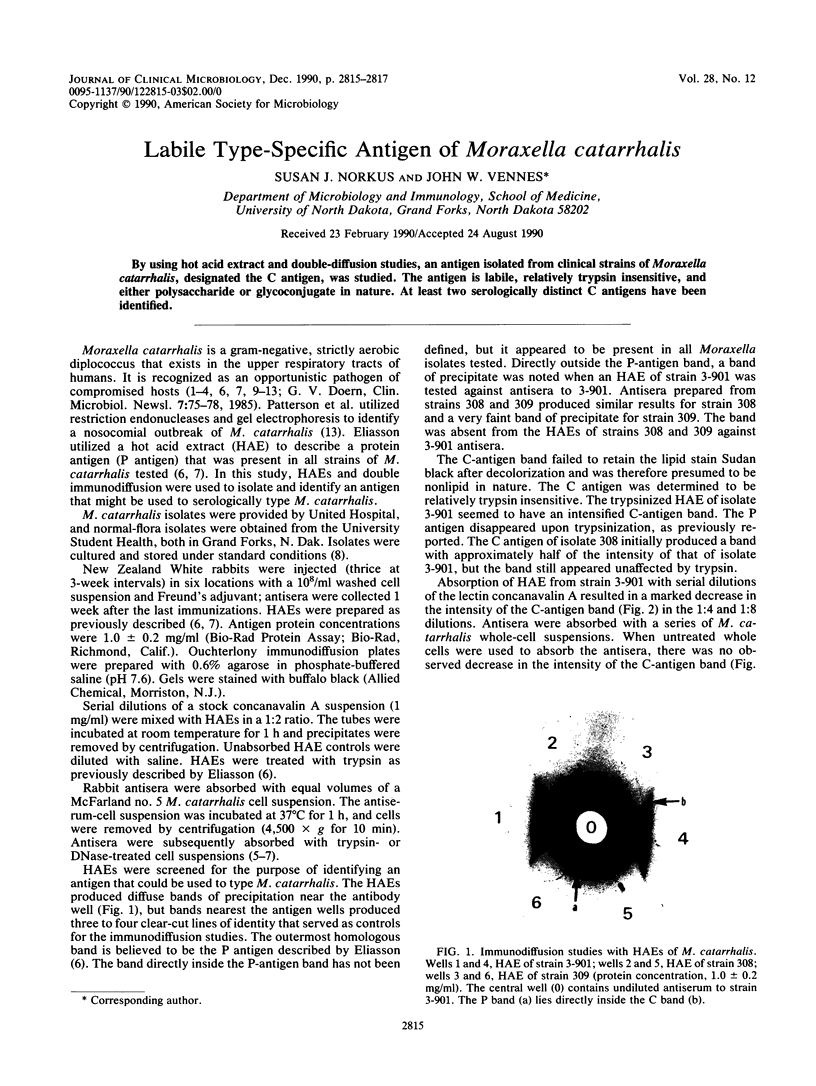
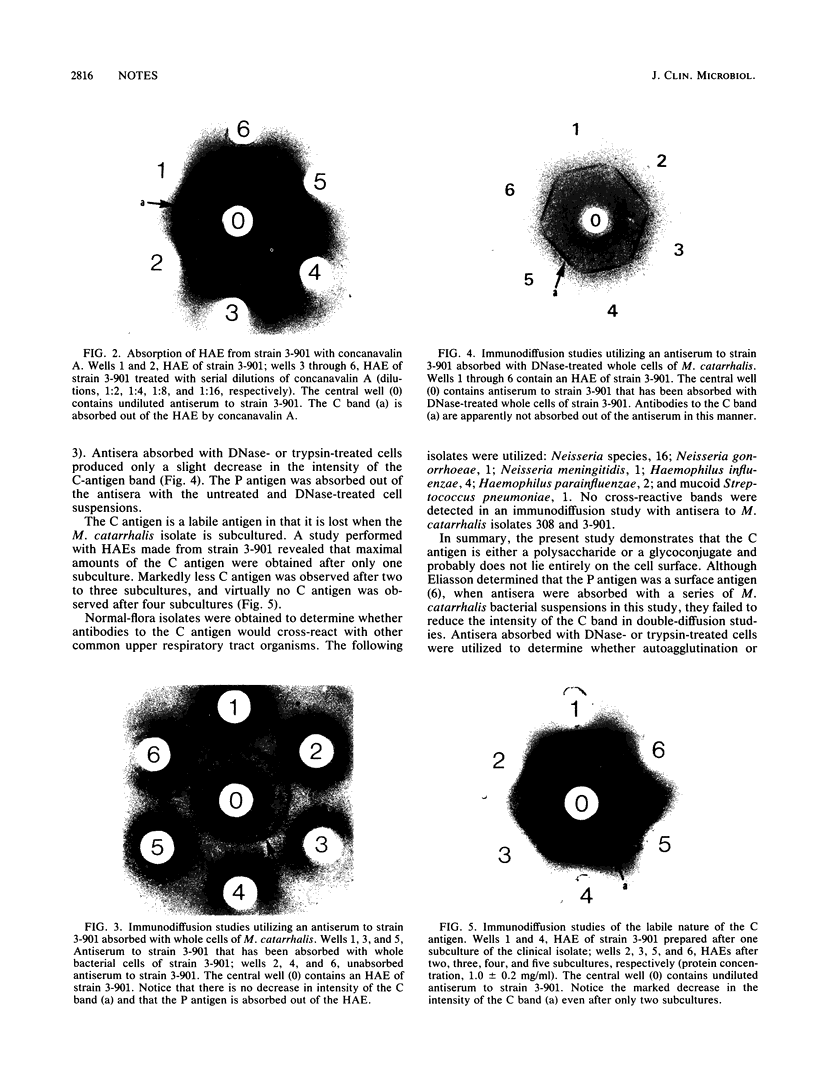
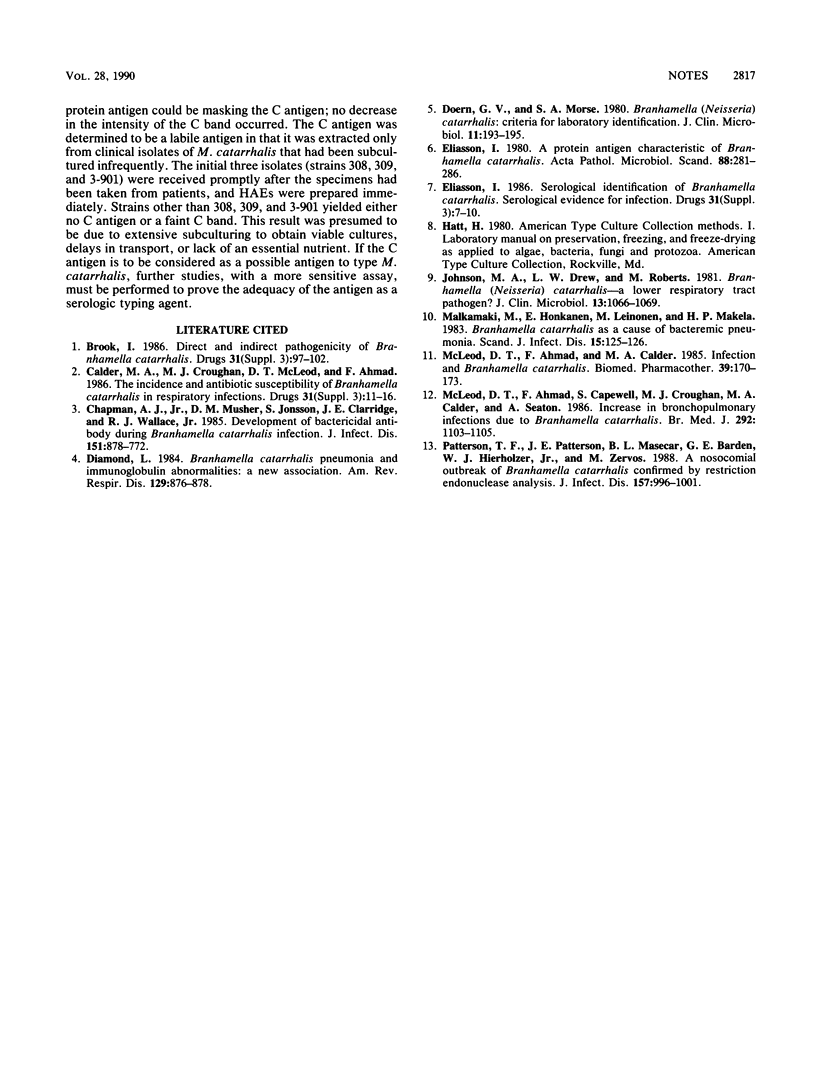
Images in this article
Selected References
These references are in PubMed. This may not be the complete list of references from this article.
- Brook I. Direct and indirect pathogenicity of Branhamella catarrhalis. Drugs. 1986;31 (Suppl 3):97–102. doi: 10.2165/00003495-198600313-00021. [DOI] [PubMed] [Google Scholar]
- Calder M. A., Croughan M. J., McLeod D. T., Ahmad F. The incidence and antibiotic susceptibility of Branhamella catarrhalis in respiratory infections. Drugs. 1986;31 (Suppl 3):11–16. doi: 10.2165/00003495-198600313-00005. [DOI] [PubMed] [Google Scholar]
- Chapman A. J., Jr, Musher D. M., Jonsson S., Clarridge J. E., Wallace R. J., Jr Development of bactericidal antibody during Branhamella catarrhalis infection. J Infect Dis. 1985 May;151(5):878–882. doi: 10.1093/infdis/151.5.878. [DOI] [PubMed] [Google Scholar]
- Diamond L. A., Lorber B. Branhamella catarrhalis pneumonia and immunoglobulin abnormalities: a new association. Am Rev Respir Dis. 1984 May;129(5):876–878. doi: 10.1164/arrd.1984.129.5.876. [DOI] [PubMed] [Google Scholar]
- Doern G. V., Morse S. A. Branhamella (Neisseria) catarrhalis: criteria for laboratory identification. J Clin Microbiol. 1980 Feb;11(2):193–195. doi: 10.1128/jcm.11.2.193-195.1980. [DOI] [PMC free article] [PubMed] [Google Scholar]
- Eliasson I. A protein antigen characteristic of Branhamella catarrhalis. Serological identification of the genus. Acta Pathol Microbiol Scand B. 1980 Oct;88(5):281–286. doi: 10.1111/j.1699-0463.1980.tb02642.x. [DOI] [PubMed] [Google Scholar]
- Eliasson I. Serological identification of Branhamella catarrhalis. Serological evidence for infection. Drugs. 1986;31 (Suppl 3):7–10. doi: 10.2165/00003495-198600313-00004. [DOI] [PubMed] [Google Scholar]
- Johnson M. A., Drew W. L., Roberts M. Branhamella (Neisseria) catarrhalis--a lower respiratory tract pathogen? J Clin Microbiol. 1981 Jun;13(6):1066–1069. doi: 10.1128/jcm.13.6.1066-1069.1981. [DOI] [PMC free article] [PubMed] [Google Scholar]
- Malkamäki M., Honkanen E., Leinonen M., Mäkelä P. H. Branhamella catarrhalis as a cause of bacteremic pneumonia. Scand J Infect Dis. 1983;15(1):125–126. doi: 10.3109/inf.1983.15.issue-1.21. [DOI] [PubMed] [Google Scholar]
- McLeod D. T., Ahmad F., Calder M. A. Infection and Branhamella catarrhalis. Biomed Pharmacother. 1985;39(4):170–173. [PubMed] [Google Scholar]
- McLeod D. T., Ahmad F., Capewell S., Croughan M. J., Calder M. A., Seaton A. Increase in bronchopulmonary infection due to branhamella catarrhalis. Br Med J (Clin Res Ed) 1986 Apr 26;292(6528):1103–1105. doi: 10.1136/bmj.292.6528.1103. [DOI] [PMC free article] [PubMed] [Google Scholar]
- Patterson T. F., Patterson J. E., Masecar B. L., Barden G. E., Hierholzer W. J., Jr, Zervos M. J. A nosocomial outbreak of Branhamella catarrhalis confirmed by restriction endonuclease analysis. J Infect Dis. 1988 May;157(5):996–1001. doi: 10.1093/infdis/157.5.996. [DOI] [PubMed] [Google Scholar]



